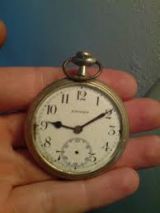- Forum
- General Discussion | Introductions | Off Topic Forum
- Photography General Discussion
- No love for fixed 50mm fans with APS cameras
No love for fixed 50mm fans with APS cameras
-
 Topic Author
Topic Author
- Kid Prodigy
- Snapobsessed
-
- Canon EOS 7D
- Followers: 68
- Posts: 309
-
Points:
960
Post #383595
Canon EOS 7D|Canon EF 70-200mm F/2.8L USM |
Canon EF 50mm F/1.4 USM |
(2) Canon Speedlite 480EX II
-

- KCook
- Photo Elder
-
- Canon EOS 50D and Olympus E-P5
- Followers: 1325
- Posts: 5410
-
Points:
32913
-

- Superman
- Photography Hooked
-
- Nikon D810 and Z6
- Followers: 118
- Posts: 688
-
Points:
2393
-

- gdbrekke
- Vendor
-
- Canon 1D Mark IV (x2), 6D
- Followers: 7
- Posts: 16
-
Points:
10
Post #383604
Most manufacturers make a a 35mm (or near 35mm) lens for APSC, which gives a 50mm equivalent on full frame.
I used to have Nikon's 35mm/1.8 DX lens on a D200. It was a really great lens.
-

- william_cpa
- Vendor
-
- Nikon D2X, Canon 5D II, Canon T3i, Nikon D40, 2x Mamiya RB67
- Followers: 139
- Posts: 613
-
Points:
0
Post #383610
KCook wrote: Those roots are with full frame cameras. Field of view is too narrow on a crop body for general use.
Kelly
+1 for that, 50mm used to be as close to normal for 35mm film to be the film version of a kit lens.
Although the current Canon 50mm 1.8 II is so cheap that it is hard to not recommend it to beginners who have kit lenses that are 10 times slower. $99 for 1.8 to 22 is very tempting.
-

- william_cpa
- Vendor
-
- Nikon D2X, Canon 5D II, Canon T3i, Nikon D40, 2x Mamiya RB67
- Followers: 139
- Posts: 613
-
Points:
0
-

- Scotty
- Agent 007
- James Bond, PT mod.
- Followers: 1088
- Posts: 9863
-
Points:
14684
-

- garyrhook
- Oh Wise One
-
- Nikon D850, Nikon D750, Panasonic G7K
- Followers: 912
- Posts: 11103
-
Points:
67681
-

- Shadowfixer1
- Photo Elder
-
- Olympus OMD E-M1 MKII
- Followers: 1349
- Posts: 5553
-
Points:
73269
Post #383669
Technically correct, but people need a way of relating what they will get between different formats so call it what you want but there is an equivalent.garyrhook wrote:

<math and geometry nazi>
What he said. Crop factor and sensor size have no affect on focal length, which is fixed. There's no "equivalence".
</math and geometry nazi>
-

- garyrhook
- Oh Wise One
-
- Nikon D850, Nikon D750, Panasonic G7K
- Followers: 912
- Posts: 11103
-
Points:
67681
Post #383679
Shadowfixer1 wrote: but people need a way of relating what they will get between different formats
Why?
And how often do people really need to compare behavior in formats?
Since focal length can not change, ever, and it was the marketing departments of the manufacturers that instigated this nonsense, why do we continue to propagate something that is technically incorrect? Especially when, mathematically, it is impossible to produce identical results with 2 differently sized sensors?
Boy, I hope I don't have to pull out my "Stand back, I'm going to use math" t-shirt.
-

- Scotty
- Agent 007
- James Bond, PT mod.
- Followers: 1088
- Posts: 9863
-
Points:
14684
Post #383682
Shadowfixer1 wrote:
Technically correct, but people need a way of relating what they will get between different formats so call it what you want but there is an equivalent.garyrhook wrote:

<math and geometry nazi>
What he said. Crop factor and sensor size have no affect on focal length, which is fixed. There's no "equivalence".
</math and geometry nazi>
Agreed. Everybody knows what you mean when you say it's this many mm's on crop. I'm just putting out information for education purposes.
I actually believe, (correct me if i'm wrong anybody), mm is measured by the distance between the rear element and the sensor?
When the last candle has been blown out
and the last glass of champagne has been drunk
All that you are left with are the memories and the images-David Cooke.
-

- hghlndr6
- Master of the Lens
- Nikon: P510, D600, D7100
- Followers: 1222
- Posts: 1650
-
Points:
28119
Post #383686
Scotty wrote:
Shadowfixer1 wrote:
Technically correct, but people need a way of relating what they will get between different formats so call it what you want but there is an equivalent.garyrhook wrote:

<math and geometry nazi>
What he said. Crop factor and sensor size have no affect on focal length, which is fixed. There's no "equivalence".
</math and geometry nazi>
Agreed. Everybody knows what you mean when you say it's this many mm's on crop. I'm just putting out information for education purposes.
I actually believe, (correct me if i'm wrong anybody), mm is measured by the distance between the rear element and the sensor?
According to Nikon, it's not a measured distance but a calculated one. Didn't know that.
"Focal length, usually represented in millimeters (mm), is the basic description of a photographic lens. It is not a measurement of the actual length of a lens, but a calculation of an optical distance from the point where light rays converge to form a sharp image of an object to the digital sensor or 35mm film at the focal plane in the camera. The focal length of a lens is determined when the lens is focused at infinity.
The focal length tells us the angle of view—how much of the scene will be captured—and the magnification—how large individual elements will be. The longer the focal length, the narrower the angle of view and the higher the magnification. The shorter the focal length, the wider the angle of view and the lower the magnification."
www.nikonusa.com/en/Learn-And-Explore/Ar...ng-focal-length.html
-

- Scotty
- Agent 007
- James Bond, PT mod.
- Followers: 1088
- Posts: 9863
-
Points:
14684
Post #383689
hghlndr6 wrote:
Scotty wrote:
Shadowfixer1 wrote:
Technically correct, but people need a way of relating what they will get between different formats so call it what you want but there is an equivalent.garyrhook wrote:

<math and geometry nazi>
What he said. Crop factor and sensor size have no affect on focal length, which is fixed. There's no "equivalence".
</math and geometry nazi>
Agreed. Everybody knows what you mean when you say it's this many mm's on crop. I'm just putting out information for education purposes.
I actually believe, (correct me if i'm wrong anybody), mm is measured by the distance between the rear element and the sensor?
According to Nikon, it's not a measured distance but a calculated one. Didn't know that.
"Focal length, usually represented in millimeters (mm), is the basic description of a photographic lens. It is not a measurement of the actual length of a lens, but a calculation of an optical distance from the point where light rays converge to form a sharp image of an object to the digital sensor or 35mm film at the focal plane in the camera. The focal length of a lens is determined when the lens is focused at infinity.
The focal length tells us the angle of view—how much of the scene will be captured—and the magnification—how large individual elements will be. The longer the focal length, the narrower the angle of view and the higher the magnification. The shorter the focal length, the wider the angle of view and the lower the magnification."
www.nikonusa.com/en/Learn-And-Explore/Ar...ng-focal-length.html
This is why I could never be an engineer. Interesting stuff.
When the last candle has been blown out
and the last glass of champagne has been drunk
All that you are left with are the memories and the images-David Cooke.
-

- Shadowfixer1
- Photo Elder
-
- Olympus OMD E-M1 MKII
- Followers: 1349
- Posts: 5553
-
Points:
73269
Post #383726
Why? Here's why. I just purchased a mirrorless camera. I wanted a Fuji because I like Fuji images. I've been using Nikons for years and for 95% of what I do, I use the 18-200 VR lens. The reason I didn't buy the Fuji was they didn't one lens to cover what my 18-200 does. Olympus did so that is the system I bought into. People always want to compare behavior in the different formats. In fact that's always the first question to come up when discussing different formats. Sorry you don't understand this but it is true. If you don't want to know the equivalency, fine, but I don't see the need to try and correct someone when they talk about equivalent focal lengths because in the groups I speak to, that's one of the very first questions asked. When digital first came out, it was always the first question asked. I'm not trying to start an argument, I just don't understand the soapbox on this issue. Why does it matter if someone wants to know.garyrhook wrote: Since there'a trend of late for taking threads in new directions,
Shadowfixer1 wrote: but people need a way of relating what they will get between different formats
Why?
And how often do people really need to compare behavior in formats?
Since focal length can not change, ever, and it was the marketing departments of the manufacturers that instigated this nonsense, why do we continue to propagate something that is technically incorrect? Especially when, mathematically, it is impossible to produce identical results with 2 differently sized sensors?
Boy, I hope I don't have to pull out my "Stand back, I'm going to use math" t-shirt.
- Forum
- General Discussion | Introductions | Off Topic Forum
- Photography General Discussion
- No love for fixed 50mm fans with APS cameras
Latest Reviews
The Canon EOS R100 is an entry-level mirrorless camera introduced in 2023. But just because it’s an entry-level camera doesn’t mean it’s a bare-bones camera. Find out why in this review!
Nikon’s retro-looking Nikon Zfc is anything but retro. Under its classic body is a host of features and amenities that make it a worthwhile compact mirrorless camera for 2024.
The Canon EOS R50 is one of the newest R-system cameras from Canon. Is it worth your money? Find out all the details you need to know in this comprehensive review.
The Sony FE 70-200mm f/2.8 GM OSS II is Sony’s flagship mirrorless zoom lens. As such, it’s loaded with features and has a top-shelf build quality that makes it a top pick!
Forum Top Posters
-
1TCav 5 posts
-
2Prago 4 posts
-
3CharleyL 4 posts
-
4Razky 4 posts
-
5Randy Shaw 4 posts
-
6Sandy Smith Photos 3 posts
-
7CaptNemo 3 posts
-
8Hassner 3 posts
-
9db3348 3 posts
-
10Foggy 3 posts
Latest Articles
The Canon EOS R100 is an entry-level mirrorless camera introduced in 2023. But just because it’s an entry-level camera doesn’t mean it’s a bare-bones camera. Find out why in this review!
Are you ready to upgrade your camera? Before buying new, you might consider the value of purchasing used gear to save money.
The Olympus OM-D E-M10 Mark IV is a micro four thirds camera released in 2020. It’s an entry-level system along with the OM-D E-M5 Mark III. Use this guide to determine which one is best for you!
Blue hour photography might not be as well known as golden hour photography, but it is every bit as good a time to create epic images of landscapes. Learn how in this quick tutorial!
Nikon’s retro-looking Nikon Zfc is anything but retro. Under its classic body is a host of features and amenities that make it a worthwhile compact mirrorless camera for 2024.
Moving from taking snapshots of your dog to creating beautiful images doesn’t have to be that difficult! Use the tips outlined in this dog photography guide, and you’ll get better results in no time.
Acrylic print photos are a beautiful way to display your favorite images. But they don’t come without some questions. Get all the answers you need about this medium in this guide!
Where do you get your landscape photography inspiration? Is it from masters like Ansel Adams? Or perhaps viewing art from other genres? We’ve got these and a few other sources for you to check out!

















